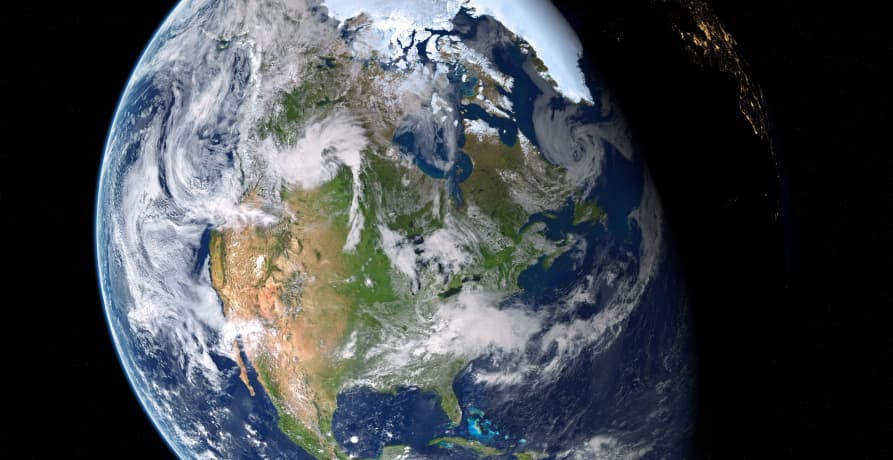ESG / CSR
Industries
Carbon Cycle: Definition, Principles and Importance



The carbon cycle is a finely turned process that has a natural balance, however, human activity has interfered with this equilibrium and now it is dangerously out of sync. Urgent and drastic action is needed in order to restore the world’s carbon balance and prevent further global warming. The only way to achieve this is to eliminate the use of fossil fuels and also invest in negative emissions schemes that reduce existing levels of carbon in the atmosphere.
👉 What is the carbon cycle? Why is it so important? And how can we restore balance to the carbon cycle and prevent further global warming?
First up, what is carbon?
Carbon also forms part of the chemical compound carbon dioxide - CO2. And while this compound has been vilified in the media in recent years (it’s a greenhouse gas and one of the driving forces behind climate change), it’s actually one of the most important gases on Earth. Plants depend on it for the creation of their energy and in turn they provide us with oxygen and food to eat. It also traps heat close to the Earth, helping our planet to hold onto some of the heat radiated from the sun, without it the Earth would be an uninhabitable ball of ice!
However, as with anything, you can have too much of a good thing - and too much carbon dioxide in the atmosphere is a problem.

What is the carbon cycle?
The carbon cycle describes the way that carbon moves around the Earth. It’s made up of different carbon emitting sources, which in turn, are balanced out by carbon sinks that decrease the amount of carbon in the atmosphere. For example, when animals breathe in oxygen, they then expel carbon dioxide into the atmosphere, this is blanched out by the Earth’s plants and vegetation which absorb carbon dioxide, using it for the process of photosynthesis and releasing oxygen back into the environment. The different systems on Earth naturally balance themselves out - something that is termed ‘dynamic equilibrium’.
Unfortunately human activity has upset this equilibrium and we now find ourselves in a situation where levels of carbon in the atmosphere are rising sharply.
What caused carbon levels to rise?
The Industrial Revolution is the name given to the period of history which spans from around 1760 until 1840, where The United Kingdom, Continental Europe and the United States transitioned from creating goods by hand to using mechanised methods of mass production.
This period of time brought about the advent of four major industries that play a huge part in most economies even to this day: ie. manufacturing, mining, transportation, and retail. The benefits of the industrial revolution cannot be underplayed - it led to huge economic growth, more efficient labour, and propelled technological innovation. Ultimately it’s led to increased incomes and improved living standards across the globe.
However, and it’s a big however - it’s also impossible to deny that industrialisation has also had some pretty major and detrimental consequences for the environment. You see, the Industrial Revolution was fuelled by harmful fossil fuels - initially coal, and then eventually by petroleum and natural gas. The burning of these fuels meant that over the industrial era, over 2.3 trillion tonnes of carbon dioxide was released into the Earth’s atmosphere. About half of this was absorbed by the Earth’s carbon sinks, but the rest of this excess carbon remained in our atmosphere.

How are rising levels of carbon affecting our environment?
As we’ve already touched on, approximately half of the extra carbon created through human activity is absorbed by the Earth’s carbon sinks. Carbon sinks are natural environments that have the ability to absorb carbon dioxide from the atmosphere - the Earth’s primary carbon sinks are the oceans, forests, and soil.
Unfortunately, human activity is producing so much excess carbon that the Earth’s carbon sinks are unable to trap all of the excess carbon. The carbon cycle is unbalanced and the remaining carbon has no where else to go except into the atmosphere where it traps heat, which in turn warms the planet.
The Earth’s rising temperatures are having a catastrophic effect on our global climate, with increased extreme weather events such as drought, flooding and storms, as well as changes to wider weather patterns and climates that are having far reaching and profound effects on biodiversity. These impacts destroy homes and livelihoods and even threaten our lives.
The threat that global warming presents to mankind (and to the Earth’s biodiversity) really cannot be understated. If we continue to release carbon dioxide and other greenhouse gases into the atmosphere we’ll create an increasingly inhospitable world that struggles to support life.

The threat to carbon sinks
We’ve talked about how carbon sinks play a crucial role in the carbon cycle, by helping to absorb some of the excess carbon that is released into the atmosphere. However, they are also under threat from rising global temperatures and environmental changes.
Take the example of our oceans: cooler water is able to absorb more carbon dioxide, so as global temperatures rise and our oceans also heat up we can expect their carbon storage capacity to diminish.
Plants and forests are another important carbon sink, however, with changing environments, increasing incidences of forest fires, and activities such as deforestation, their ability to act as a carbon sink is also on a downward trend.
Similarly, soil is at risk from climate change. Increasing temperatures and the use of industrial agricultural practices mean that soil is becoming dry and depleted of the necessary nutrients and organic material that it needs to trap carbon.
❗️ Global warming is decreasing the capacities of the Earth’s carbon sinks, which will only further accelerate the volume of carbon dioxide in the atmosphere, and therefore push global temperatures higher - it’s a vicious cycle, and one that needs to be broken if we’re going to succeed in re-balancing the carbon cycle.

How can we restore the equilibrium of the world’s carbon cycle?
If we want to stop global warming and the worsening climate crisis it’s absolutely crucial that we restore the equilibrium of the world’s carbon cycle. So how do we do this?
The primary way that we can restore balance to the carbon cycle is through the elimination of fossil fuels. When fossil fuels (petroleum, natural gas and coal) are burned, they release huge amounts of carbon dioxide into the atmosphere. In fact, they’re responsible for almost 90% of global carbon emissions. This is why reducing our reliance on fossil fuels (and ideally eliminating their use altogether in the long term) is so important.
Thankfully, governments across the world are starting to reduce their dependence on fossil fuels, and increasing levels of investment is being funnelled towards renewable energy and green technology that will facilitate the transition to clean energy.
And while these actions are undoubtedly a step in the right direction, many believe that they don’t go far enough. More is needed to speed up the rate of decarbonisation if we’re going to have any hope of restoring balance to the world’s carbon cycle before it’s too late.
Carbon levels will still be too high
Even if we manage to completely eliminate the use of fossil fuels, this won’t actually manage to reduce existing levels of carbon dioxide - it will just stop the level of carbon in the atmosphere from continuing to grow. If we want to restore the carbon cycle to the level of carbon that was seen before the industrial revolution we need to create new carbon sinks, or amplify the capacity of existing carbon sinks. This is what’s known as negative emission schemes.
Amplifying existing carbon sinks
Amplifying the capacity of existing carbon sinks can be achieved by: restoring forest that have been degraded or destroyed, through practices such as sustainable forestry and the planting of trees; improving agricultural practices in a way that maximises the carbon storage capacity of the soil; improving ecosystems and plant life through revegetation and the protection of areas of environmental significance.
Create new carbon sinks
Man made carbon sinks are another way that we can actively reduce the levels of carbon in our atmosphere and restore balance to the carbon cycle. Artificial carbon sinks can be created or simply make use of existing underground structures to store carbon that we capture from the atmosphere. Also known as carbon capture, utilisation and storage (CCUS), the process encompasses a wide range of different methods and technologies that are designed to remove carbon dioxide from the environment.

Some might wonder if negative emissions schemes alone are enough to reduce carbon emissions, and if they could even mean that we can continue to burn fossil fuels. The answer to this is no - fossil fuels are incredibly damaging for a whole host of other reasons, and current CCUS technology is limited. As it stands, we wouldn’t be able to remove all of the carbon that’s being released into the atmosphere in order to balance the carbon cycle.
A finely balanced system
Restoring equilibrium to the carbon cycle is only possible where we combine action to eliminate further carbon emissions that make the situation worse, while also reducing existing carbon dioxide levels through negative emissions schemes. To achieve this goal, we need massive changes to national and global economic systems and infrastructure - and if we’re going to have any chance of mitigating the worst impacts of climate change, we need it now.
What about Greenly?
At Greenly we can help you to assess your company’s carbon footprint, and then give you the tools you need to cut down on emissions. Why not request a free demo with one of our experts - no obligation or commitment required.
If reading this article has inspired you to consider your company’s own carbon footprint, Greenly can help. Learn more about Greenly’s carbon management platform here.



